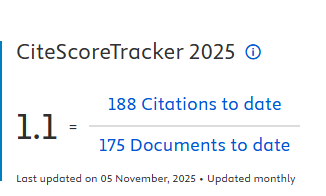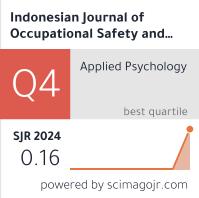The Impact of Physical Workload and Personal Factors on Nutritional Status Among Manufacturing Workers: A Cross-Sectional Study
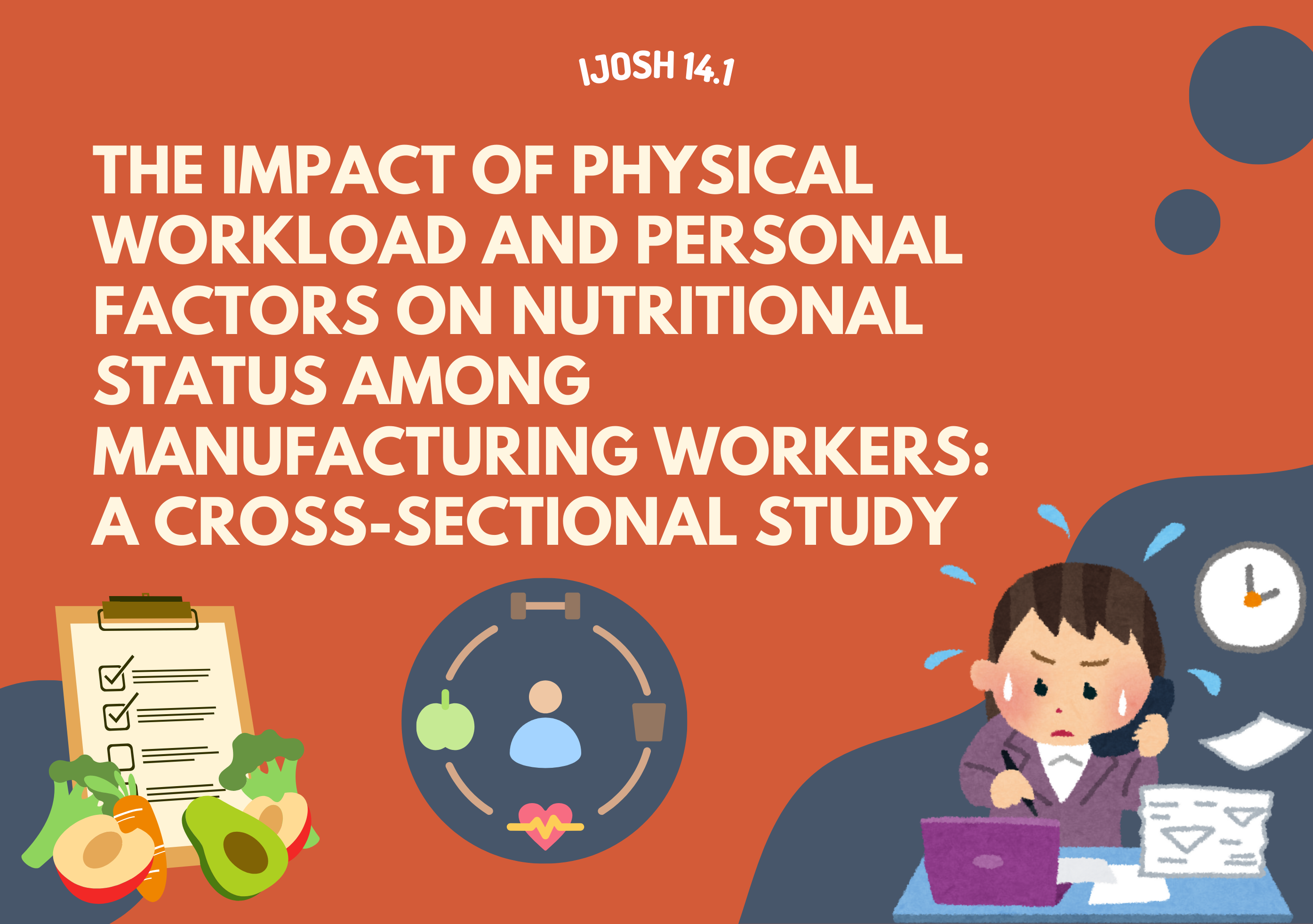
Downloads
Introduction: Occupational health must be considered in the workplace. Cases of overweight and obesity among workers in the manufacturing sector have increased. This study analyzes the relationship between physical workload and personal factors related to nutritional status among manufacturing workers. Methods: This study used an observational analytic study with a cross-sectional design. The variables of this study were physical workload, nutritional status, and personal factors such as gender, educational level, exercise habits, and smoking habits. The sample in this study was 239 workers in the manufacturing industry, and it was obtained using random sampling techniques. Data were analyzed using the Spearman correlation and coefficient contingency test. Result: More than half of the total cases of overweight and obesity occur in manufacturing workers who have a low physical workload. More than half of the respondents are female, do not have a high school education, and have never exercised. Most do not have a smoking habit. The results showed that physical workload (p=0.001), exercise habits (p=0.001), gender (p=0,004), and educational level (p=0.037) were related to nutritional status. In contrast, manufacturing workers' smoking habits were not associated with nutritional status (p>0.05). Conclusion: Physical workload, exercise habits, gender, and educational level have a relationship with nutritional status among workers, it is recommended that workers must increase their exercise routine such as implementing scheduled sports shifts for workers and providing sports facilities in companies so the case of being obesity can be decreased.
Ahmed, B. and Konje, J.C. (2023) ‘The Epidemiology of Obesity in Reproduction’, Best Practice & Research Clinical Obstetrics & Gynaecology, 89, p. 102342. https://doi.org/https://doi.org/10.1016/j.bpobgyn.2023.102342.
Annurullah, G.A. et al. (2021) ‘Faktor Risiko Obesitas Pada Pekerja Kantoran: a Systematic Review’, Jurnal Kesehatan Tambusai, 2(2), pp. 80–88. https://doi.org/10.31004/jkt.v2i2.1795.
Armenta-Hernandez, O.D. et al. (2020) ‘Effects of Job Content and Physical Activity on Body Mass Index among Obese Managers of the Mexican Manufacturing Industry’, International Journal of Environmental Research and Public Health. https://doi.org/10.3390/ijerph17113969.
Basi Nska-Zych, A. and Springer, A. (2021) ‘Organizational and Personal Outcomes of Health Promotion Strategies—A Review of Empirical Research’, International Journal of Environmental Research and Public Health, 18(2), pp. 1–27. https://doi.org/10.3390/ijerph18020383.
Boocock, M. et al. (2024) ‘Obesity as a Risk Factor for Musculoskeletal Injury during Manual Handling Tasks: A Systematic Review and Meta-Analysis’, Safety Science, 176, p. 106548. Ahttps://doi.org/https://doi.org/10.1016/j.ssci.2024.106548.
Bosy-Westphal, A., Hägele, F.A. and Müller, M.J. (2021) ‘What Is the Impact of Energy Expenditure on Energy Intake?’, Nutrients, 13(10), pp. 1-13. https://doi.org/10.3390/nu13103508.
BPS (2021) Prevalensi Obesitas Pada Penduduk Umur > 18 Tahun Menurut Jenis Kelamin, 2016-2018.
Chung, W. and Lim, S. (2020) ‘Factors Contributing to Educational Differences in Obesity among Women: Evidence from South Korea’, BMC Public Health, 20(1), pp. 1–11. https://doi.org/10.1186/s12889-020-09221-3
Devi, F. A., Setyaningsih, Y. and Widjasena, B. (2023) ‘Relationship Between Physical Workload, Work Fatigue, and Drinking Water Consumption to Work Productivity of Brickmakers’, Disease Prevention and Public Health Journal, 17(1), pp. 93–99. https://doi.org/10.12928/dpphj.v17i1.6674.
Eum, M.J. and Jung, H.S. (2020) ‘Association between Occupational Characteristics and Overweight and Obesity among Working Korean Women: The 2010–2015 Korea National Health and Nutrition Examination Survey’, International Journal of Environmental Research and Public Health, 17(5). https://doi.org/10.3390/ijerph17051585.
Hassani, B. et al. (2020) ‘A Priority Oriented Nutrition Education Program to Improve Nutritional and Cardiometabolic Status in the Workplace: A Randomized Field Trial’, Journal of Occupational Medicine and Toxicology, 15(1), pp. 1–9. https://doi.org/10.1186/s12995-020-0252-y.
Hsieh, T.H. et al. (2020) ‘Association between Obesity and Education Level among the Elderly in Taipei, Taiwan between 2013 and 2015: A Cross-Sectional Study’, Scientific Reports, 10(1), pp. 1–9. https://doi.org/10.1038/s41598-020-77306-5.
Jeong, D., Lee, J. and Yoon, E. (2022) ‘Study on Nutrition, Dietary and Health Status of Middle-Aged Korean Men according to Sedentary Hours: based on the 2019 Korea National Health and Nutrition Examination Survey’, Journal of Nutrition and Health, 55(3), pp. 369–375. https://doi.org/10.4163/jnh.2022.55.3.359.
Jepchumba, R.S., Munyaka, A. and Kamuhu, R. (2023) ‘Prevalence and Demographic Risk Factors for Overweight and Obesity among Healthcare Workers at Uasin Gishu County Hospital, Kenya’, African Health Sciences, 23(2), pp. 565–571. https://doi.org/10.4314/ahs.v23i2.65.
Kawai, T., Autieri, M. V. and Scalia, R. (2021) ‘Adipose Tissue Inflammation and Metabolic Dysfunction in Obesity’, American Journal of Physiology - Cell Physiology, 320(3), pp. C375–C391. https://doi.org/10.1152/ajpcell.00379.2020.
Keramat, S.A. et al. (2020) ‘A Longitudinal Exploration of the Relationship between Obesity, and Long Term Health Condition with Presenteeism in Australian Workplaces, 2006-2018’, PLoS ONE, 15(8), p. e0238260. https://doi.org/10.1371/journal.pone.0238260.
Loos, R.J.F. and Yeo, G.S.H. (2022) ‘The Genetics of Obesity: From Discovery to Biology’, Nature Reviews Genetics, 23(2), pp. 120–133. https://doi.org/10.1038/s41576-021-00414-z.
Mantey, D.S., Omega-Njemnobi, O. and Kelder, S.H. (2020) ‘E-Cigarette Use Is Associated With Intentions to Lose Weight Among High School Students’, Nicotine & Tobacco Research, 22(5), pp. 838–842. https://doi.org/10.1093/ntr/nty245.
Mänttäri, S.K. et al. (2019) ‘Activity Level and Body Mass Index as Predictors of Physical Workload During Working Career’, Safety and Health at Work, 10(4), pp. 527–530. https://doi.org/10.1016/j.shaw.2019.09.002.
Mazhar, U. and Rehman, F. (2022) ‘Productivity, Obesity, and Human Capital: Panel Data Evidence’, Economics & Human Biology, 44, p. 101096. https://doi.org/https://doi.org/10.1016/j.ehb.2021.101096.
Most, J. and Redman, L.M. (2020) ‘Impact of Calorie Restriction on Energy Metabolism in Humans’, Experimental Gerontology, 133. https://doi.org/10.1016/j.exger.2020.110875.
Mukhopadhyay, S. (2021) ‘Do employers Discriminate Against Obese Employees? Evidence from Personals who are Simultaneously Self-Employed and Working for an Employer’, Economics & Human Biology, 42, p. 101017. https://doi.org/https://doi.org/10.1016/j.ehb.2021.101017.
Nohra, R.G. et al. (2022) ‘Nurses’ Eating Habits in Lebanon during the Economic and Health Crises: A Cross-sectional Study’, Archives of Public Health, 80(1), pp. 1–11. https://doi.org/10.1186/s13690-021-00775-1.
O’Brien, V.M. et al. (2020) ‘Overweight and Obesity in Shift Workers: Associated Dietary and Lifestyle Factors’, European Journal of Public Health, 30(3), pp. 532–537. https://doi.org/10.1093/eurpub/ckaa084.
Ortega Anta, R.M. et al. (2021) ‘Problemática Nutricional en Fumadores y Fumadores Pasivos’, Nutricion Hospitalaria, 38(2), pp. 31–34. https://doi.org/10.20960/nh.03794.
Pramanik, A. et al. (2019) ‘Chapter 3 - Learning Enhancement of Project-Based Unit in Mechanical Engineering Undergraduate Course’, in J.P. Davim (ed.). Manufacturing Engineering Education. Chandos Publishing, pp. 73–84. https://doi.org/https://doi.org/10.1016/B978-0-08-101247-5.00003-4.
Proper, K.I. et al. (2020) ‘The Mediating Effect of Unhealthy Behaviors and Body Mass Index in the Relation Between High Physical Workload and Self-Rated Poor Health in Male Construction Workers’, Journal of Occupational and Environmental Medicine, 62(8), pp. E414–E422. https://doi.org/10.1097/JOM.0000000000001928.
Roring, N.M., Posangi, J. and Manampiring, A.E. (2020) ‘Hubungan antara pengetahuan gizi, aktivitas fisik, dan intensitas olahraga dengan status gizi’, Jurnal Biomedik:JBM, 12(2), p. 110. https://doi.org/10.35790/jbm.12.2.2020.29442.
Rosmiati, R. et al. (2023) ‘Dietary Patterns, Physical Activity, and Obesity among Indonesian Urban Workers’, Amerta Nutrition, 7(2SP), pp. 164–170. https://doi.org/10.20473/amnt.v7i2SP.2023.164-170.
Safi, A. et al. (2022) ‘Workplace Physical Activity Barriers and Facilitators: A Qualitative Study Based on Employees Physical Activity Levels’, International Journal of Environmental Research and Public Health, 19(15), pp. 1-16. https://doi.org/10.3390/ijerph19159442.
Satrya, C. et al. (2024) ‘The Overview of Safety Culture in Manufacturing Industry: A Systematic Literature Review’, African Journal of Biological Sciences, 6, pp. 118–126.
Da Silva, J.C. et al. (2021) ‘Relationship of Work-related Stress with Obesity among Brazilian Female Shift Workers’, Public Health Nutrition, 24(2), pp. 260–266.https://doi.org/10.1017/S1368980020004243.
Susanto, A., Sari, E.N. and Prastiwi, R.S. (2021) ‘Analisis Hubungan Perilaku Merokok dengan Obesitas Sentral Pada Orang Dewasa Sehat di Suradadi Kabupaten Tegal’, PREPOTIF : Jurnal Kesehatan Masyarakat, 5(2), pp. 1193–1198. https://doi.org/10.31004/prepotif.v5i2.2461.
Tonnon, S.C. et al. (2019) ‘Physical Workload and Obesity have a Synergistic Effect on Work Ability among Construction Workers’, International Archives of Occupational and Environmental Health, 92(6), pp. 855–864. https://doi.org/10.1007/s00420-019-01422-7.
Witkam, R. et al. (2021) ‘Do Associations between Education and Obesity Vary Depending on the Measure of Obesity Used? A Systematic Literature Review and Meta-analysis’, SSM - Population Health, 15, p. 100884. https://doi.org/10.1016/j.ssmph.2021.100884.
Wulansari, A., Martianto, D. and Baliwati, Y. F. (2016) ‘Estimasi Kerugian Ekonomi Akibat Obesitas pada Orang Dewasa di Indonesia (Estimation of Economic lost due to Obesity in Indonesian Adults)’, Jurnal Gizi dan Pangan, 11(2), pp. 159–168.
Zubery, D., Kimiywe, J. and Martin, H.D. (2021) ‘Prevalence of Overweight and Obesity, and its associated Factors among Health-care Workers, Teachers, and Bankers in Arusha City, Tanzania’, Diabetes, Metabolic Syndrome and Obesity, 14, pp. 455–465. https://doi.org/10.2147/DMSO.S283595.
Zulfa, Q.A., Dardjito, E. and Prasetyo, T.J. (2022) ‘Hubungan Asupan Zat Gizi Makro, Kualitas Tidur dan Aktivitas Fisik dengan Status Gizi pada Karyawan Shift di PT. Pajitex’, Darussalam Nutrition Journal, 6(2), p. 82. https://doi.org/10.21111/dnj.v6i2.8310.

This work is licensed under a Creative Commons Attribution-NonCommercial-ShareAlike 4.0 International License.

In order to be accepted and published by The Indonesian Journal of Occupational Safety and Health, Author(s) who submit an article should complete all the review process. The copyright of received articles assigned to the The Indonesian Journal of Occupational Safety and Health and Department of Safety and Health, Universitas Airlangga as publishers of the journal. The intended copyright includes the rights to publish articles in various forms (including reprints).
The Editorial Team of The Indonesian Journal Of Occupational Safety and Health and Department of Safety and Health strive to ensure that no errors occur in the articles that have been published, both data errors and statements in the article.
Users of this website will be licensed to use materials from this website following the Creative Commons Attribution-NonCommercial-ShareAlike 4.0 International License. No fees charged. Please use the materials accordingly.
------------------------------------------------------------------------------------------------------------------------------------------------------------------------------------------
Attribution ” You must give appropriate credit, provide a link to the license, and indicate if changes were made. You may do so in any reasonable manner, but not in any way that suggests the licensor endorses you or your use.
NonCommercial ” You may not use the material for commercial purposes.
ShareAlike ” If you remix, transform, or build upon the material, you must distribute your contributions under the same license as the original.

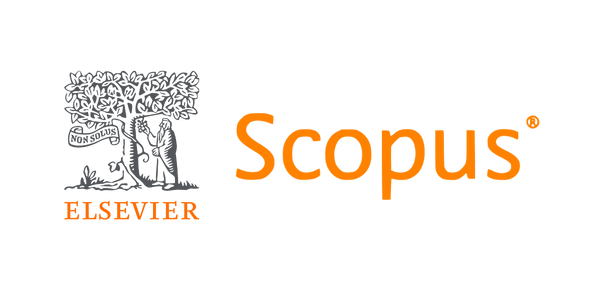
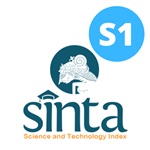




 How to Submit Articles in OJS
How to Submit Articles in OJS
